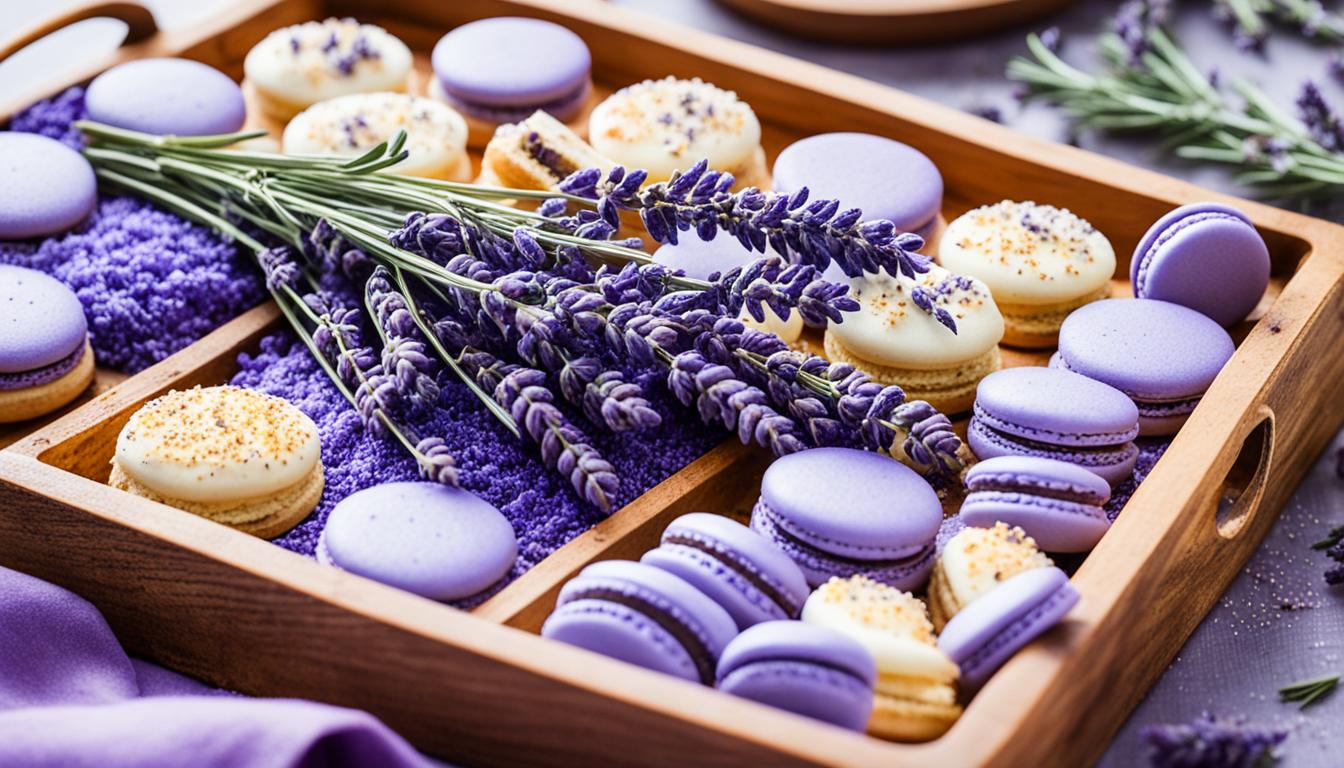Are you ready to elevate your baked goods with a touch of floral enchantment? Discover the captivating world of lavender-infused desserts and unlock the secrets to creating divine confections that will leave your taste buds begging for more.
With the aromatic allure of lavender, you can take your desserts to new heights. We’ll show you how to use lavender in your baking to create tantalizing treats that are both visually stunning and deliciously fragrant.
From lavender-infused shortbread cookies to lavender lemonade, the possibilities are endless. Let us guide you through the mesmerizing realm of lavender desserts, providing valuable tips, mouthwatering recipes, and inspiring ideas along the way.
Get ready to embark on an extraordinary culinary adventure that will transform your ordinary desserts into extraordinary creations. Are you ready to unlock the secrets of the lavender universe? Let’s dive in!
How to Choose and Use Culinary Lavender
When incorporating lavender into your baking, it is crucial to select the right type of lavender. We recommend choosing culinary lavender, specifically the Lavandula Angustifolia or “English Lavender” species, as it is best suited for cooking. This variety offers a sweet floral flavor that beautifully complements desserts.
You can find dried culinary lavender in specialty spice shops, gourmet cooking stores, health food stores, and some large supermarkets. When purchasing dried lavender, look for vibrant purple buds that emit a strong, aromatic scent. Avoid lavender that appears dull brown or gray, as it may have lost its flavor and potency.
If you have a green thumb, you can also consider purchasing live lavender plants. This allows you to have a fresh and potent source of lavender at your fingertips. When using fresh lavender, we recommend harvesting it just before it reaches full bloom. Gently rinse the flowers before incorporating them into your recipes.
Different Lavender Varieties
- Lavandula Angustifolia: This is the preferred culinary lavender for baking. It has a sweet floral flavor and is commonly used in desserts.
- Lavandula x Intermedia: Also known as “Lavandin,” this lavender variety is used for its strong fragrance and is often found in candles, soaps, and potpourri.
- Lavandula Dentata: This lavender variety is popular in Mediterranean cuisine and is commonly used in savory dishes.
Using Lavender in Recipes
There are several ways to incorporate lavender into your recipes:
- Dried Lavender: Use whole lavender buds or grind them into a fine powder. Add them directly to your baked goods, such as cookies, cakes, or scones.
- Lavender Extract: Infuse dried lavender buds in a high-proof alcohol, such as vodka or rum, to create a homemade lavender extract. Use it sparingly in your recipes for a concentrated flavor.
- Lavender Infusion: Steep dried lavender buds in warm milk, cream, or melted butter to infuse the liquid with lavender flavor. This can be used to add a delicate floral note to your recipes.
- Lavender Sugar: Mix dried lavender buds with granulated sugar and let it sit for a few days to create lavender-infused sugar. Use this fragrant sugar to sweeten your desserts or beverages.
- Lavender Syrup: Simmer dried lavender buds with sugar and water to make a flavorful syrup. This syrup can be used to drizzle over pancakes, waffles, or ice cream.
By following these guidelines and experimenting with different lavender varieties and methods, you can elevate your baking with the delightful flavor and aroma of culinary lavender.
Magical Properties of Lavender in Baking
Lavender is not only used in baking but also holds a significant place in magical practices and rituals. In the realm of witchcraft, lavender is renowned for its ability to bring calming and soothing energy. Its magical correspondences span various aspects, making it a versatile tool in spellwork.
For those seeking a peaceful slumber, lavender is often used to promote sleep and relaxation. Its gentle aroma can help calm the mind, making it ideal for meditation practices. Additionally, lavender is believed to enhance intuition during divination rituals, aiding in the exploration of the subconscious.
To harness the magical properties of lavender, there are several methods to consider. It can be diffused, allowing its soothing energy to permeate the environment. Burning dried lavender as loose incense can also be a powerful way to engage with its calming properties. Alternatively, lavender can be incorporated into spell jars, charm bags, or even candle dressings to enhance their peaceful energy.
In the world of magic, lavender is associated with feminine and receptive energies. It is aligned with the elements of air and fire, ruled by the planet Mercury. Lavender is connected to the throat and third eye chakras, facilitating clear communication and heightened intuition. Additionally, lavender is affiliated with the zodiac sign Leo, imparting its energy to those born under this sign.
When incorporating lavender into magical practices, it is important to approach it with respect and intention. By acknowledging and understanding its properties, lavender can become a potent tool in various rituals, bringing peace, clarity, and tranquility to practitioners.
